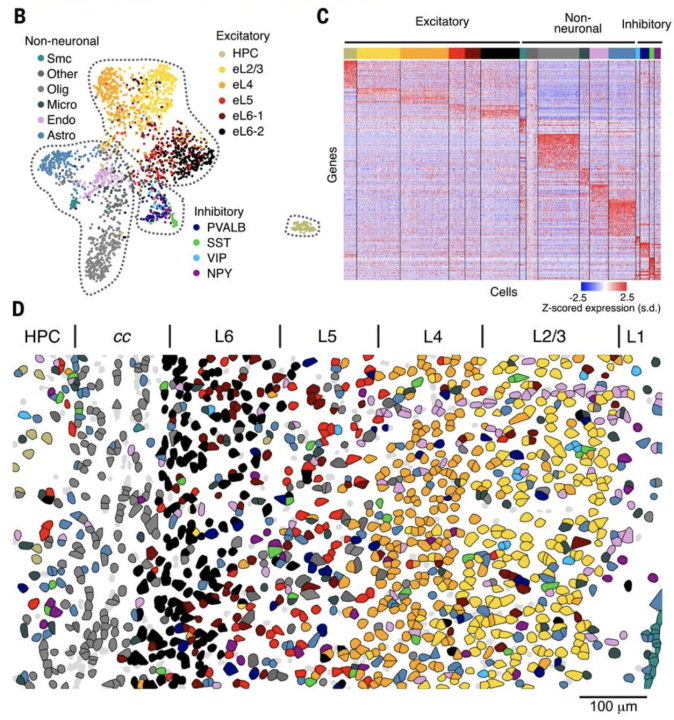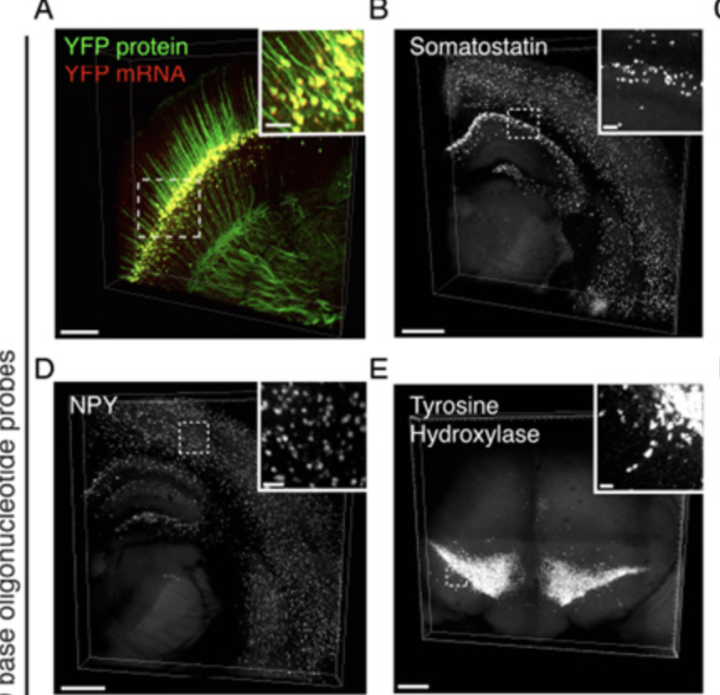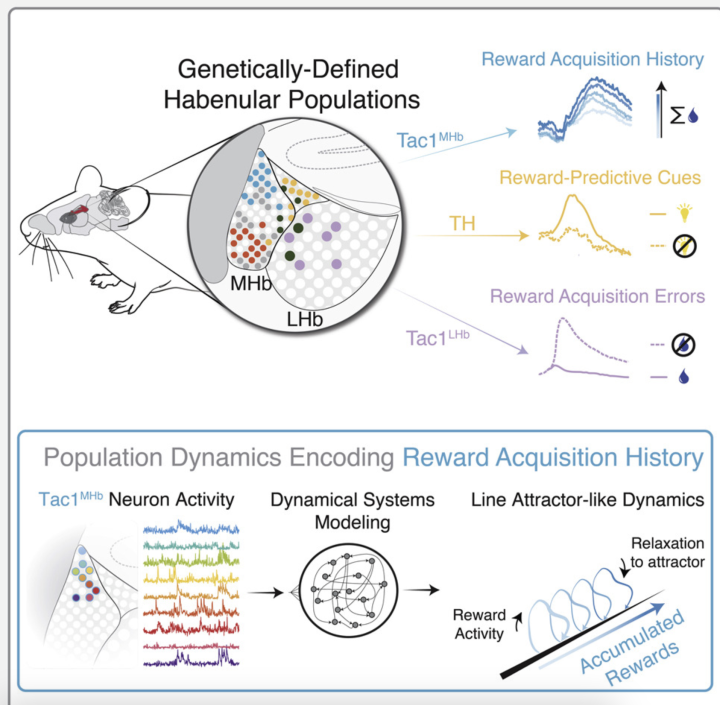
Postdoc, F.Hoffmann-La Roche, Universität Basel-Biozentrum
Ph.D. University of California, San Diego
B.S. University of Illinois
Research Interests
The nervous system must continuously process sensory stimuli, evaluate outcomes, and apply learned rules to future behavior. To accomplish these diverse tasks, neural circuits are specialized at the systems, cellular, and molecular levels. We aim to understand how heterogenous, molecularly-defined neuronal populations work together to drive behavior. We use cell-type specific activity monitoring and behavioral analysis to tackle this question in the habenula. This thalamic structure shows a rich transcriptional diversity, and has been associated with several neuropsychiatric disorders, but we lack a detailed understanding of how different cell types map onto behavior in healthy and pathological states. We have found that different habenular cell types encode expectancy and outcome in motivated behavior and can adapt their activity to changing reward contingencies, and we are interested if habenular dysfunction may contribute to altered reward processing in neuropsychiatric disorders.
Wang, X., Allen, W.E., Wright, M.A., Sylwestrak, E.L., Samusik, N., Vesuna, S., Evans, K., Liu, C., Ramakrishnan, C., Liu, J., et al. (2018). Three-dimensional intact-tissue sequencing of single-cell transcriptional states. Science 361, 5691–39.
Sylwestrak, E.L., Rajasethupathy, P., Wright, M.A., Jaffe, A., and Deisseroth, K. (2016). Multiplexed Intact-Tissue Transcriptional Analysis at Cellular Resolution. Cell 164, 792–804.
Sylwestrak, E. L., Jo, Y., Vesuna, S., Wang, X., Holcomb, B., Tien, R. H., Kim, D. K., Fenno, L., Ramakrishnan, C., Allen, W. E., Chen, R., Shenoy, K. V., Sussillo, D., & Deisseroth, K. (2022). Cell-type-specific population dynamics of diverse reward computations. Cell, 185(19), 3568–3587.












